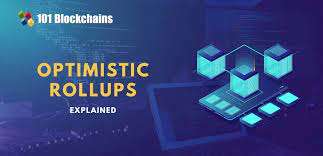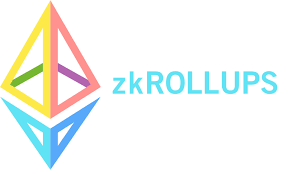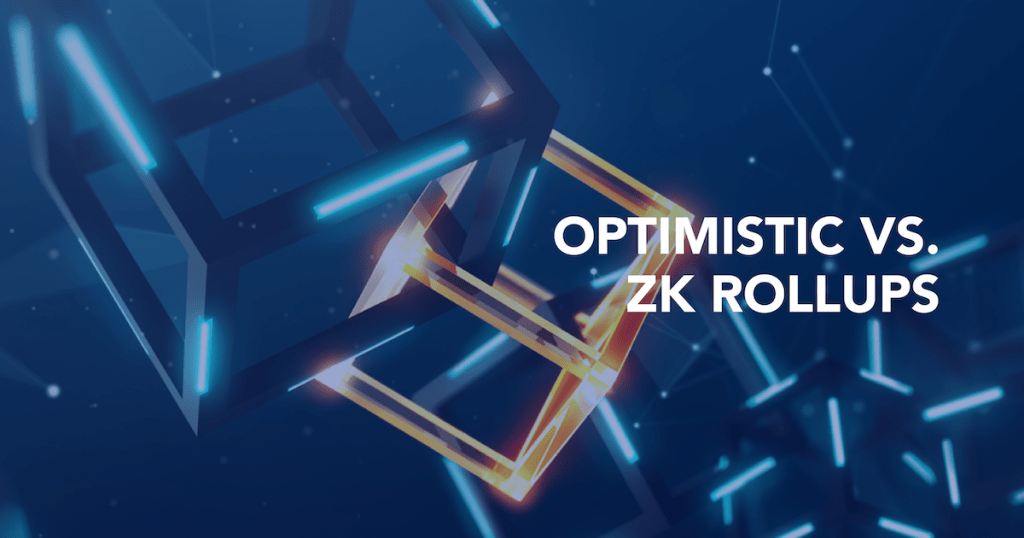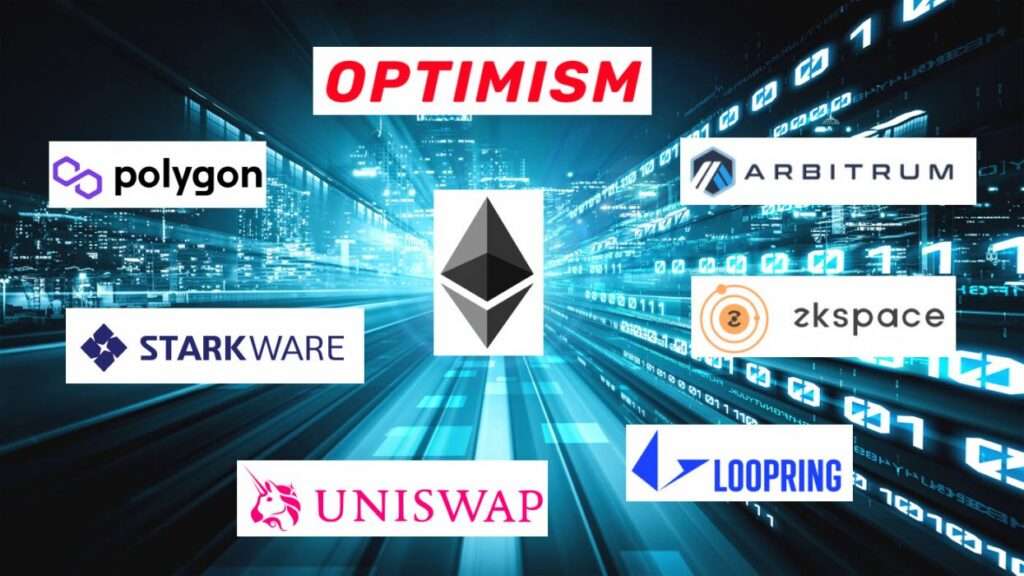Cryptocurrencies have been gaining massive popularity and attention over the past few years. With the increasing adoption of cryptocurrencies, the underlying technology, blockchain, has also been undergoing significant changes to improve scalability and speed. layer 2 crypto scaling solutions like Optimistic Rollups and ZK Rollups have emerged as potential solutions to these problems. In this article, we will compare the two and discuss which one is the best Layer 2 crypto.
Table of Contents
ToggleIntroduction
What are layer 2 crypto scaling solutions?
Layer 2 scaling solutions refer to techniques used to increase the transaction processing capacity of a blockchain network without altering the underlying consensus mechanism. These solutions work by moving some of the computation and validation processes off the main blockchain, which reduces the burden on the network and speeds up transaction processing times.
Layer 2 scaling solutions are generally classified into two categories: on-chain and off-chain solutions. On-chain solutions include sharding and state channels, while off-chain solutions include sidechains and rollups.
Rollups, which include Optimistic Rollups and ZK Rollups, have gained significant attention in recent years due to their ability to process large numbers of transactions off-chain and then batch them into a single transaction on the main blockchain. This approach significantly reduces the cost and time required to process transactions while maintaining the security guarantees of the underlying blockchain.
In summary, Layer 2 scaling solutions offer promising ways to improve the scalability of blockchain networks, and they will play a critical role in the widespread adoption of blockchain technology.
Importance of layer 2 crypto scaling solutions in the cryptocurrency world
Layer 2 scaling solutions are becoming increasingly important in the world of cryptocurrency as more and more people adopt blockchain technology. As the number of users and transactions on blockchain networks grows, the need for faster and more cost-effective transaction processing becomes increasingly important.
Layer 2 scaling solutions offer several benefits that make them an attractive option for improving the scalability of blockchain networks. They can significantly increase the transaction throughput while reducing the burden on the main blockchain network. This, in turn, can lead to lower transaction fees and faster transaction processing times, which are critical for improving the user experience and driving adoption.
Another important advantage of layer 2 crypto scaling solutions is that they can be implemented without requiring changes to the underlying consensus mechanism of the blockchain. This means that they can be implemented quickly and easily without the need for significant modifications to the network.
Optimistic Rollups
What are Optimistic Rollups?
Optimistic Rollups are a type of layer 2 crypto scaling solution for blockchains. They work by aggregating multiple transactions into a single transaction, which is then submitted to the blockchain. The transactions are verified off-chain, which reduces the amount of data that needs to be processed on-chain, resulting in faster transaction processing times and lower transaction fees.

In an Optimistic Rollup, the transactions are validated by a group of validators who run the validation software. If a validator detects an invalid transaction, they can challenge it and provide proof of the invalidity. The challenge is then adjudicated by a smart contract on the blockchain. If the transaction is found to be valid, it is added to the blockchain, and if it is found to be invalid, it is rejected.
Optimistic Rollups are a promising solution for the scalability problem faced by blockchains, as they can significantly increase the transaction throughput without compromising the security of the underlying blockchain.
How do Optimistic Rollups work?
Optimistic Rollups are a layer 2 crypto scaling solution for blockchains that aim to improve transaction processing speeds and reduce fees. They work by processing transactions off-chain and submitting them to the main blockchain as a single transaction.
When a user initiates a transaction on an Optimistic Rollup, the transaction is first validated by a group of validators who run the validation software. These validators assume that all transactions are valid until proven otherwise, which is why they are called “optimistic”. This approach significantly reduces the amount of data that needs to be processed on the main blockchain, resulting in faster transaction processing times and lower transaction fees.
If a validator detects an invalid transaction, they can challenge it and provide proof of the invalidity. The challenge is then adjudicated by a smart contract on the main blockchain. If the transaction is found to be valid, it is added to the blockchain, and if it is found to be invalid, it is rejected.
Optimistic Rollups are fully compatible with existing Ethereum smart contracts, making them a versatile solution for developers and users. They can significantly increase the transaction throughput without compromising the security of the underlying blockchain.
Benefits of Optimistic Rollups:
- Scalability: Optimistic Rollups can significantly improve the scalability of blockchain networks by processing transactions off-chain and submitting them to the main blockchain as a single transaction. This approach can increase the transaction throughput without compromising the security of the blockchain.
- Lower transaction fees: Since Optimistic Rollups can process transactions off-chain, they can significantly reduce transaction fees compared to on-chain transactions. This makes them a more affordable option for users and dApp developers.
- Compatibility with existing smart contracts: Optimistic Rollups are fully compatible with existing Ethereum smart contracts, making them a versatile solution for developers and users. This means that any dApp or protocol that works on Ethereum can be easily integrated with Optimistic Rollups.
- Decentralization: Optimistic Rollups are a decentralized solution since the validation of transactions is performed by a group of validators rather than a single centralized entity. This guarantees the safety and soundness of the network by implementing measures to prevent unauthorized intrusion or corruption, and to maintain the network’s functionality and reliability.
5. Drawbacks of Optimistic Rollups:
- High latency: While Optimistic Rollups can significantly reduce transaction fees and increase transaction throughput, they may still have high latency since the transactions need to be validated off-chain before being submitted to the main blockchain.
- Security concerns: While Optimistic Rollups are a secure solution, there is always the possibility of an attack on the validators or the smart contract on the main blockchain. These attacks can compromise the integrity and security of the network.
- Limited capacity: Optimistic Rollups have limited capacity since the number of transactions that can be processed off-chain is limited by the capacity of the validators. This may lead to congestion and delays during periods of high network activity.
ZK Rollups
What are ZK Rollups?
As blockchain technology continues to grow, it has become clear that scalability remains one of its biggest challenges. One solution that has emerged in recent years is ZK Rollups, a layer 2 crypto scaling solution that promises to significantly reduce transaction costs and improve throughput. In this article, we will take a closer look at ZK Rollups, how they work, and why they are such a promising solution for the future of Ethereum transactions.

Understanding Rollups
Before we dive into ZK Rollups, it’s important to understand the basic concept of Rollups. Rollups are a Layer 2 solution that allows for the bundling of multiple transactions into a single transaction, increasing the efficiency of the Ethereum network. This is done by having a smart contract on Ethereum that aggregates multiple transactions and then submits them as a single transaction to the Ethereum network.
How do ZK Rollups Work?
ZK Rollups, or Zero-Knowledge Rollups, take the concept of Rollups a step further by adding a layer of privacy to the process. ZK Rollups use a type of cryptography called zero-knowledge proofs to enable the aggregation of multiple transactions without revealing any information about the individual transactions. This means that ZK Rollups are not only more efficient than regular Rollups, but they also provide a higher level of privacy for users.
Benefits of ZK Rollups
There are several benefits to using ZK Rollups over other scaling solutions. First and foremost, ZK Rollups are incredibly efficient, allowing for significantly lower transaction costs and faster transaction times. Additionally, because ZK Rollups use zero-knowledge proofs, they offer a high degree of privacy for users, which is an important consideration for many blockchain applications. Finally, because ZK Rollups are built on top of Ethereum, they are compatible with existing smart contracts and other Ethereum-based applications, making them a seamless and easy-to-use scaling solution.
Drawbacks of ZK Rollups
ZK Rollups have some drawbacks that must be considered. They are complex to implement, have limited capacity, and may introduce security risks. Additionally, they rely on a small number of operators which could lead to centralization. However, despite these potential issues, ZK Rollups have the potential to significantly improve the scalability and efficiency of Ethereum transactions. It is important to weigh the benefits and drawbacks before deciding to use ZK Rollups for a particular application.
Comparison

- Security: ZK Rollups offer a higher level of security as they use zero-knowledge proofs to verify the validity of transactions. On the other hand, Optimistic Rollups rely on a challenge period where users can dispute fraudulent transactions, which can be less secure.
- Capacity: ZK Rollups have a limited capacity due to the need for data to be included in the zero-knowledge proof. Optimistic Rollups, however, can scale to a higher number of transactions due to their use of fraud proofs.
- Efficiency: ZK Rollups are more efficient in terms of gas costs since they do not require as much computation as Optimistic Rollups.
- Complexity: ZK Rollups are generally more complex to implement due to their use of zero-knowledge proofs, while Optimistic Rollups are simpler to implement.
- Decentralization: Both solutions have the potential to be decentralized, but ZK Rollups may require more decentralization efforts due to their reliance on trusted setup ceremonies.
Conclusion
After comparing the two, it is evident that both Optimistic Rollups and ZK Rollups have their advantages and drawbacks. The choice between the two depends on the specific use case and the project’s requirements.
FAQs
- What is a Layer 2 crypto scaling solution?
Layer 2 Crypto scaling solutions are techniques that increase the capacity of a blockchain by moving some of the computation and storage off-chain.
- What are the benefits of using Layer 2 Crypto scaling solutions?
Layer 2 Crypto scaling solutions provide improved scalability, lower transaction fees, and faster transaction processing times.
- What is an Optimistic Rollup?
An Optimistic Rollup is a Layer 2 Crypto scaling solution that aggregates multiple transactions into a single transaction and submits them to the blockchain.
- What is a ZK Rollup?
A ZK Rollup is a Layer 2 Crypto scaling solution that uses zero-knowledge proofs to verify the validity of transactions, thus reducing the amount of data that needs to be processed on-chain.
- Which is better – Optimistic Rollups or ZK Rollups?
Both Optimistic Rollups and ZK Rollups have their advantages and drawbacks, and the choice between the two depends on the specific use case and the project’s requirements.
Reference
External Link – More information Visit Coin Gecko
Internal Link – ZKsync Airdrop link
